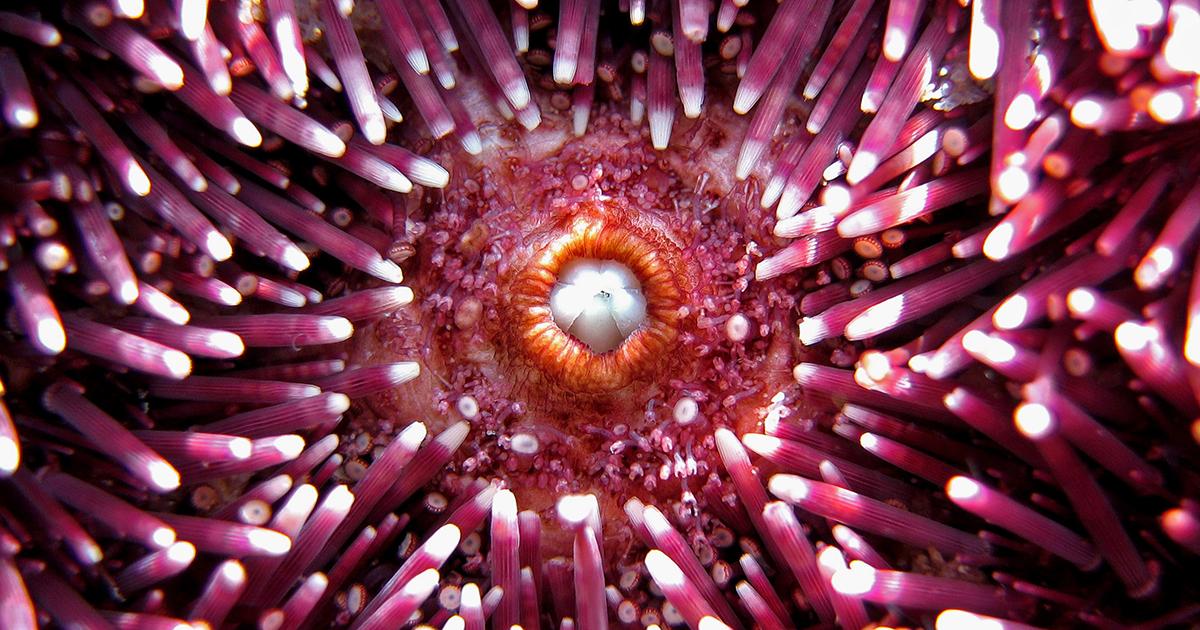Rather than simply resisting wear, their teeth are actually built to chip in a way that helps them to maintain a sharp edge. The researchers liken it to the sharpening of a knife by selectively removing material from the cutting edge. The findings may lead to new kinds of synthetic materials for use in various applications, the researchers say.
“The material on the outer layer of the tooth exhibits a complex behavior of plasticity and damage that regulates ‘controlled’ chipping of the tooth to maintain its sharpness,” said Horacio Espinosa of Northwestern University. To make up for the loss of material, he explains, an urchin’s teeth continue to grow throughout life.
Researchers had suggested previously that sea urchins might have such a self-sharpening tooth mechanism. But it wasn’t clear how they could selectively cleave portions of their teeth, which consist of apparently brittle ceramic constituents, to stay sharp.
In the new study, Espinosa and colleagues combined sophisticated mechanical testing and electron microscopy to capture 3D movies showing how the urchin’s teeth wear. Their studies show that the teeth consist of ceramic composites arranged in a precise way. On the convex side of the tooth, calcite fibers provide structural integrity. This fibrous composite transitions to another composite made of inclined calcite plates on the convex side of the tooth. As the tooth wears, those calcite plates chip away to maintain sharpness.
While the findings provide intriguing insight into the urchins, Espinosa’s primary interest is in understanding the behavior of natural and synthetic nanomaterials across different scales. He says the new findings should help to guide the design of microstructure and the selection of material constituents for the design of tools for a range of cutting, grinding, and boring applications.
“I am exploring ways to do additive manufacturing of materials that can exhibit the performance of natural materials,” he says, including those that make up the teeth of pink sea urchins.
Journal Reference:
Horacio D. Espinosa, Alireza Zaheri, Hoang Nguyen, David Restrepo, Matthew Daly, Michael Frank, Joanna McKittrick. In situ Wear Study Reveals Role of Microstructure on Self-Sharpening Mechanism in Sea Urchin Teeth. Matter, 2019; DOI: 10.1016/j.matt.2019.08.015
Story by Cell Press

